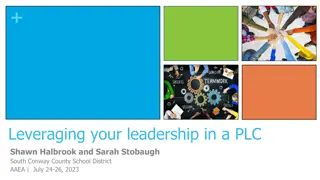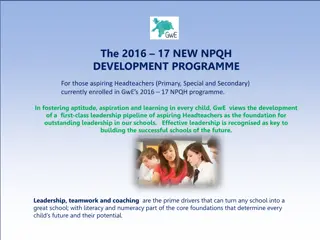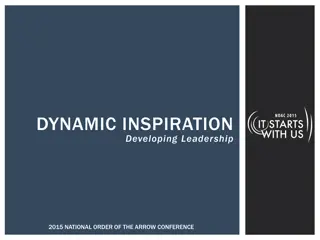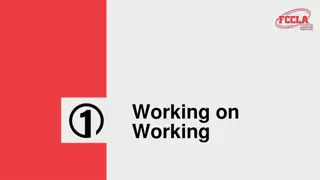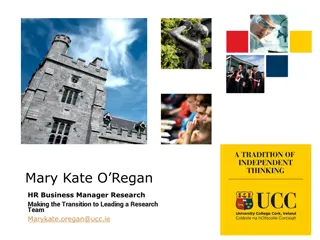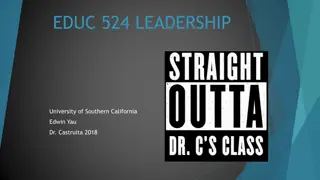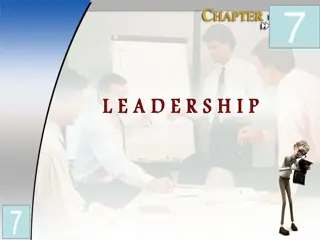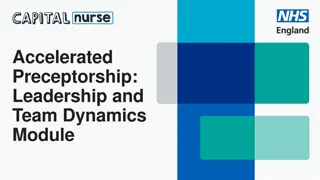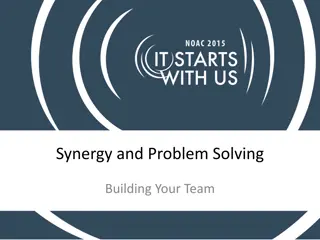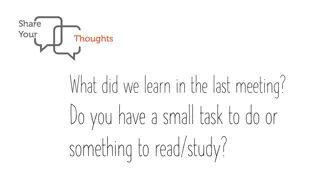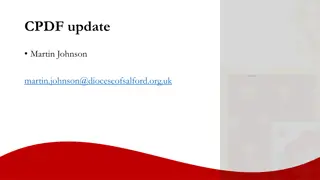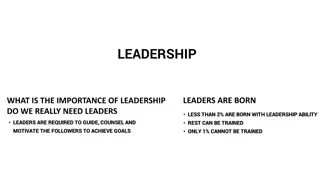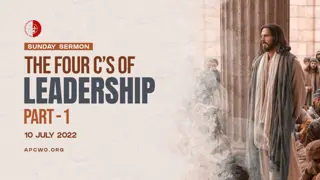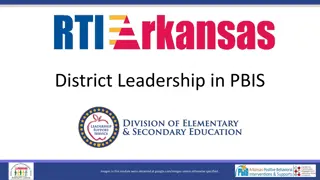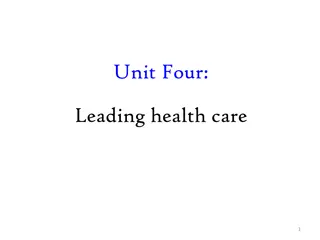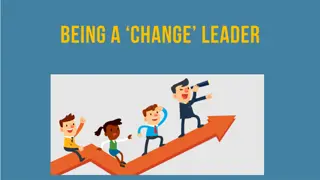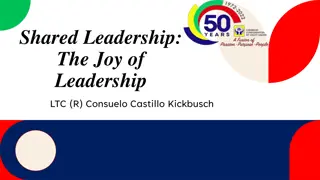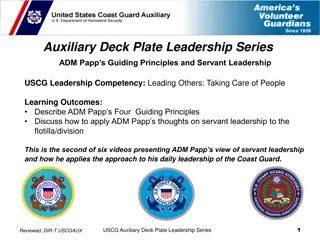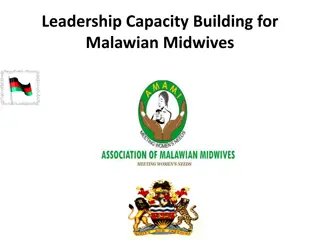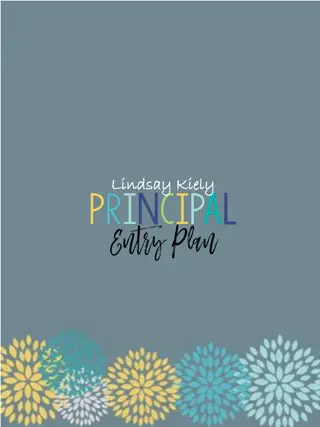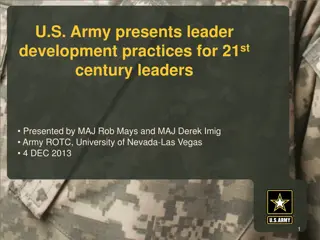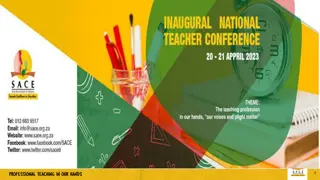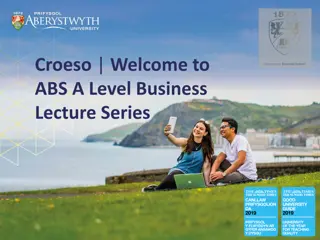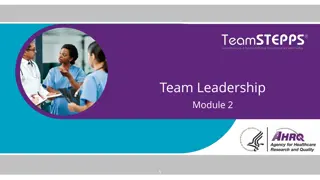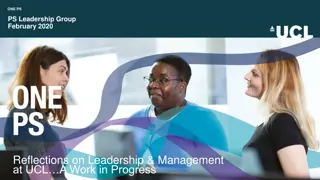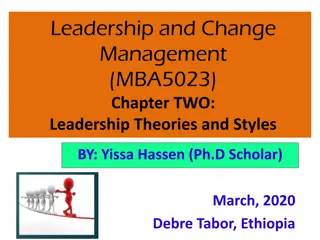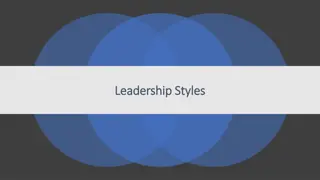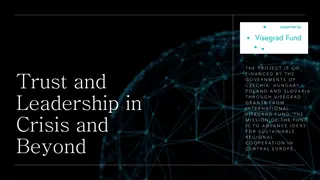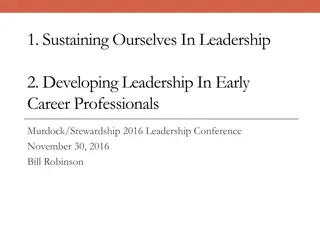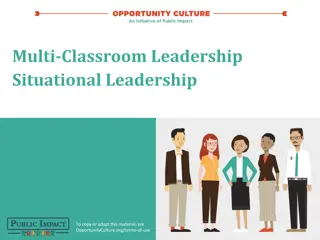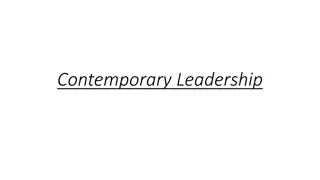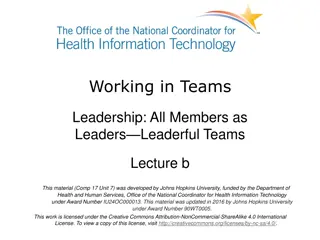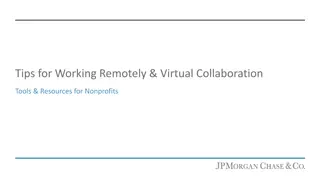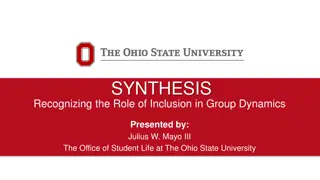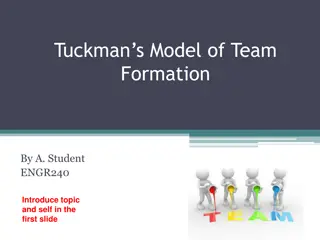Enhancing Team Dynamics: Leadership, Team Building, and Effective Collaboration
Explore the significance of leadership in fostering student achievement through effective team building activities and distributed leadership approaches. Discover the impact of PBIS on organizational culture and the attributes of an effective team, emphasizing clear objectives, communication, support, trust, and problem-solving skills.
Download Presentation

Please find below an Image/Link to download the presentation.
The content on the website is provided AS IS for your information and personal use only. It may not be sold, licensed, or shared on other websites without obtaining consent from the author. Download presentation by click this link. If you encounter any issues during the download, it is possible that the publisher has removed the file from their server.
E N D
Presentation Transcript
Team Building Activities for Building Stronger Teams
Leadership & Team Building Introduction Activities Overview of Today The Importance of Facilitation Activities to Build: Communication Collaboration Relational Trust
Leadership Matters Instructional leadership teams make a significant contribution in raising student achievement. Efficacy is best developed when the leadership team collectively works together, understands the complexities of working in a group, and has confidence in one another s ability. Leaders do not have to have formal positions of authority. Hattie, Donohoo, (2013) DeWitt (2018)
Leadership and MTSS Results from a diverse range of studies suggest that effective leadership, especially distributed leadership, is organized to: sustain focus over time, build on existing strengths and examine areas for growth; attend to practical matters that create greater learning opportunities particularly school climate and scheduling; engage in careful assessment and allocation of resources people, time, and materials; articulate and align curriculum, instruction, and assessment; and create partnerships that promote participation on the part of a wide array of people and groups outside of the schools including families and communities. VTmtss Field Guide, 2019.
Leadership and PBIS PBIS has an impact on Leadership and Culture Growth mindset leads to an increase in team or shared leadership PBIS builds social emotional competencies for students AND adults Creates a culture that is proactive and positive https://www.pbisrewards.com/blog/how-student-culture-affects-staff-culture/
Attributes of an Effective Team Clear objectives and shared goals Good communication skills Effective processes & strong structure Support and Trust Problem solving skills Interpersonal skills & relationships J. Richard Hackman in 1970s- lots of contd research.
Benefits of Team Building Builds relational trust amongst team members Reinforces interpersonal relationships Strengthens commitment to the team Highlights the importance of team collaboration Allows us the opportunity to work outside our typical roles Provides opportunities to practice problem solving when the stakes are low McEwan D, Ruissen GR, Eys MA, Zumbo BD, Beauchamp MR (2017) The Effectiveness of Teamwork Training on Teamwork Behaviors and Team Performance: A Systematic Review and Meta-Analysis of Controlled Interventions.
Ground Rules for Today Some activities will be physical in nature, but accessible to all. Breaks will be built in to today, but always take care of yourself. If you have some hesitation or limitations I should know about, please let me know. Modifications will be built in to each activity. It is always okay to say, No, thank you.
Me You, You Me Toss a Name That Person Over There Get to Know You Activities
Facilitation Tips - Before you start Identify what the team needs before you plan activities. Find fun activities that work toward team goals. Consider an outside facilitator if the team has particular challenges that may surface negatively or impact your role with the team.
Facilitators Notes Set conditions for safety - both physical and emotional. Be prepared with modifications for physical limitations, preferences about personal space, or those who wish to have non-participatory roles. Share your goal or purpose for the activity. Be explicit about the skill the team will be working toward. Be flexible about time. Don t skip the processing!
Challenge of Choice Allow participants to choose their level of challenge. Not everyone has to do everything. Group pressure can be a good thing. Find alternate roles. Scaffold and sequence activities based on the success of activities.
MTSS - Effective Collaboration The systematic process of working interdependently in an atmosphere of trust to accomplish collective commitments. Systematic process. Interdependent work. Atmosphere of trust. VTmtss Field Guide 2019
MTSS - Effective Collaboration When it works effectively, collaboration is powerful because it brings varied perspectives to bear on solving challenging problems. These varied perspectives often involve divergent and strongly held opinions. Working through conflict that naturally arises from problem-solving generally leads to better decisions and joint ownership of outcomes. An atmosphere of trust supports the feeling of safety needed to hold complex, challenging and honest discussions. It is the critical foundation for a culture of collaboration. VTmtss Field Guide 2019
VTmtss Collaboration Great leadership is at the heart of every high-quality [institution]. Within schools, leadership is most effective when it s distributed among a team of individuals with different skill sets and experiences but a shared mission to spark and sustain a school- wide culture of learning and improved outcomes for students. VTmtss Field Guide, 2019
Effective Collaboration Activities Three Chairs Twirlies & Bull s Eye Helium Stick
Teams and Communication Individual reasoning and talent contribute far less to team success than one might expect. The best way to build a great team is not to select individuals for their smarts or accomplishments but to learn how they communicate and to shape and guide the team so that it follows successful communication patterns. Harvard Business Review
Lets Make a Deal Colour Blind Attitude Charades Compass Points Perfect Match Effective Communication Activities
Relational Trust Colleagues need multiple opportunities to build interpersonal connections. Collaboration and trust create more willingness amongst staff to grow professionally and to take risks. Positive culture is built on trust. Trust and communication provide the foundation for when you get to the hard stuff. Learning Forward, Tools for Schools, 2010
Trust Drive Jump Rope Challenge Captain s Coming Alphabet Improv Shape Makers Relational Trust Activities
Chiji cards Journal Share Success One thing I appreciate Reflection Activity
Chiji Chiji (chee - jee) is a Chinese word meaning important moment or significant opportunity. Whether this moment leads to a positive or negative path depends upon the actions of the individual. The Chinese character chi literally means key. If a person has the right tools and the appropriate attitude, the important moment may open a door to new and valuable experiences. Chiji cards - The Institute for Experiential Education
Wrap Up & Reminders Facilitation is key - processing the activity changes it from a game into a learning experience. Take the time to team build - it will build a stronger team! Failures are learning experiences, too. Thank you! I hope you had fun and got some takeaways you can use with your teams. Email: JenMcKusick@gmail.com





